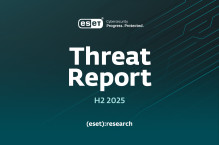Organizations are increasingly aware of the threat posed by data breaches, according to Thales’ 2017 Data Threat Report.
A remarkable 88% of respondents also admitted to feeling vulnerable to threats, with 9.1% feeling “extremely vulnerable”. This is significantly higher than the number actually experiencing data breaches.
26% of respondents reported their organizations had experienced a breach in the last year, a notable increase from 21.7% in 2016.
In addition to this, more than two in three respondents (67.8%) said they have previously experienced a data breach, an increase of almost 7% from 2016.
Garrett Bekker, principal analyst for information security at 451 Research, said: “These distressing breach rates serve as stark proof that data on any system can be attacked and compromised.”
One encouraging result found that the number of US-specific data breaches has started to fall.
Bekker expanded: “The good news: Only 19% of US retail respondents reported being breached last year, significantly less than the global average.”
Another positive finding was that 73% of respondents, up from 58% in 2016, predicted that security spending would increase over the next year.
With Lloyd’s of London estimating that a major cyberattack could cost the global economy $53 billion, increased spending is advisable - if not directly proportionate to this figure, certainly significantly heightened based on recent security scares.
Over the past few years at least, security budgets have been regularly reported to be on the rise, but the commitment needs careful planning.
Bekker said: “Unfortunately, organizations keep spending on the same security solutions that worked for them in the past, but aren’t necessarily the most effective at stopping modern breaches.”
Firms should use their increased budgets wisely, firstly identifying their weak points before they begin allocating resource.




